A good crowd of about 150 farmers attended last week’s Teagasc hill sheep event on the farm of Patrick Dunne, Glenmalure, Rathdrum, Co Wicklow.
Patrick joined the Teagasc BETTER farm sheep programme as a hill sheep farm in 2015.
His farming enterprise also experienced a significant change in 2016 with the addition of a lowland block of rented land bringing the total lowland area farmed to 57ha (40ha of which is rented), allowing a lowland flock of 250 ewes to be established, alongside a small suckler herd.
This spring, the hill flock of about 300 Cheviot ewes were out-wintered on the hill.
Following scanning, single-bearing ewes went back to the hill until mid-March while twin-bearing ewes were retained on lowland ground and supplemented until lambing. All ewes lambed indoors from 1 April onwards with strong single-bearing ewes and their lambs returned to the hill at seven weeks of age while twins were retained on the lowland.
The challenge is to identify ewes that can graze the hill
The introduction of a lowland flock and competition for lowland land and housing has increased the urgency of transforming the hill sheep flock into a lower-input enterprise.
Teagasc BETTER farm programme adviser Frank Campion said there are a number of important targets laid out in the five-year farm plan.
On breeding, the aim is to move to a more extensive system where ewes and lambs spend more time on hill grazing. The lambing date is being pushed back to 10 April, about five days after lambing should be finished in the lowland flock, with the target of lambing ewes outdoors to reduce labour and input costs.
Frank says achieving a longer grazing season on the hill will stem from changing the breed structure of the flock over the next five years and improving the quality of hill vegetation.
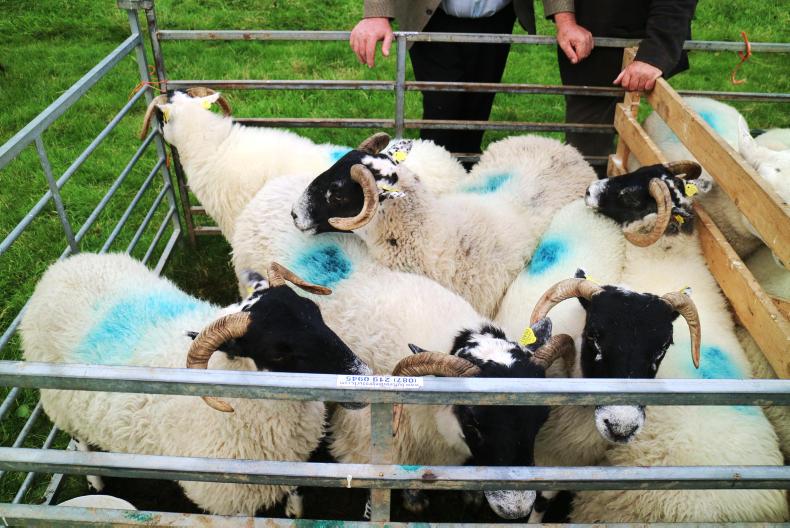
According to Patrick, the overall objective of achieving these changes is to get to a stage where the hill ewe flock requires very little input and as such there is a better chance of retaining all premia with the flock presently requiring significant investment to run.
Breeding change
Delving deeper into the breeding, Michael Gottstein, Teagasc head of sheep programme said: “The Cheviot here is quite a big ewe with a large maintenance requirement, but she is not spending much time on the hill.
"The flock is being run like a lowland flock but without the output, with only about 0.8 lambs reared per ewe joined.
"The challenge is to build a lower-input flock that can utilise the hill and still produce one lamb or more. Ewes grazing on the hill are rearing poor-quality lambs.
"As you can see, these ewes are in great condition, they are not milking well and are putting the condition into themselves.
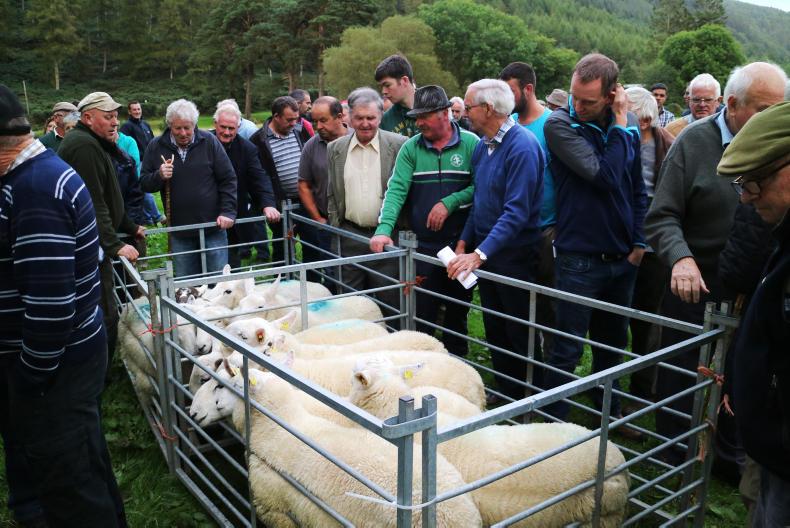
Michael Diskin's advice is that where retaining lambs will leave grass supplies tight for ewes lambs should be sold live.
"The challenge is to identify ewes that can graze the hill, produce good quality lambs and look after themselves. Another problem in achieving this is that we have no breeding information on a lot of rams and that is an issue that is holding the sheep sector back.”
Achieving this target is seen as a longer-term goal and Michael says a quick-fix approach will be used in the short term to improve flock output. The bottom 25% of Cheviot ewes, based on body condition, will be removed and bred with Suffolk rams to improve output from these ewes that are struggling to perform on the hill.
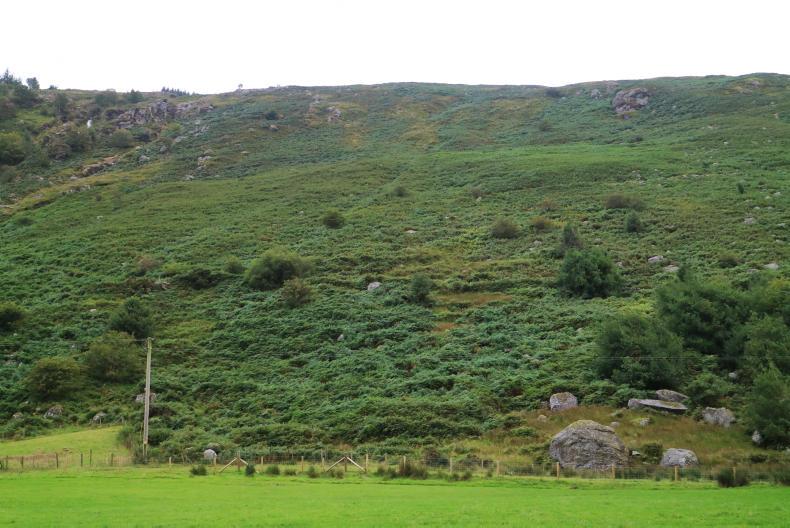
The hill grazing available to Patrick is higher than what can be viewed in the photo.
The proposed solution is then to split the hill flock into three groups. The first of these is a group of top-performing Cheviot ewes which will be bred pure with the aim of developing the desired flock of ewes from this group. The next group is a batch of Scottish Blackface ewes which will be introduced while the last group will be a batch of Cheviot X Scottish Blackface ewes. The thinking behind introducing Scottish Blackface breeding is that it will bring an element of hardiness and improve the vegetation on the hill which Michael is vital in the long term to get Cheviot ewes back on the hill full-time. The advisors are unsure if this approach will achieve the desired outcome, adding that Patrick doesn’t want to go fully away from the Cheviot breed which is traditional in the area.
Lamb performance
The upshot of improving breeding in the flock is that it should lead to a significant increase in lamb performance. Table 1 (below) details performance in the flock in 2017. Michael Diskin, enterprise leader Teagasc, Athenry says the higher seven-week performance in the hill group is stemming from all these lambs being run as singles whereas some cross-fostering took place in the lowland group.
The farm is currently weighing up what is the best sales approach for 2017-born lambs. About 90 Cheviot ewe lambs have returned to the hill and the majority of these will be retained as replacements. About 40% of male lambs are exceeding 35kg with the remainder below 35kg.

Lambs are currently being offered good-quality grass and creep feeding. In deciding if to sell or keep, Michael says that there is a margin to be made by retaining lambs and finishing intensively.
However, he says this should only be considered where there is sufficient grass available to allow lambs develop a good frame.
Where retaining lambs will leave grass short for ewes for breeding, he says lambs should be moved on with the live trade a good option where lambs can be brought close to a price of €2/kg liveweight.
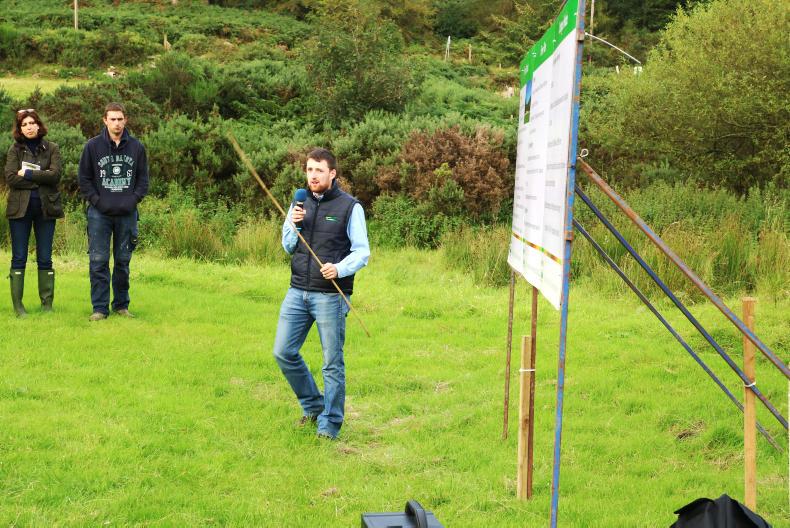
Teagasc BETTER farm sheep programme adviser Frank Campion.
Michael concluded by saying that there will be invaluable information collected on the farm in the coming years, including assessing if the modern type of Cheviot being bred is suitable for grazing and performing in primarily hill-grazing systems.

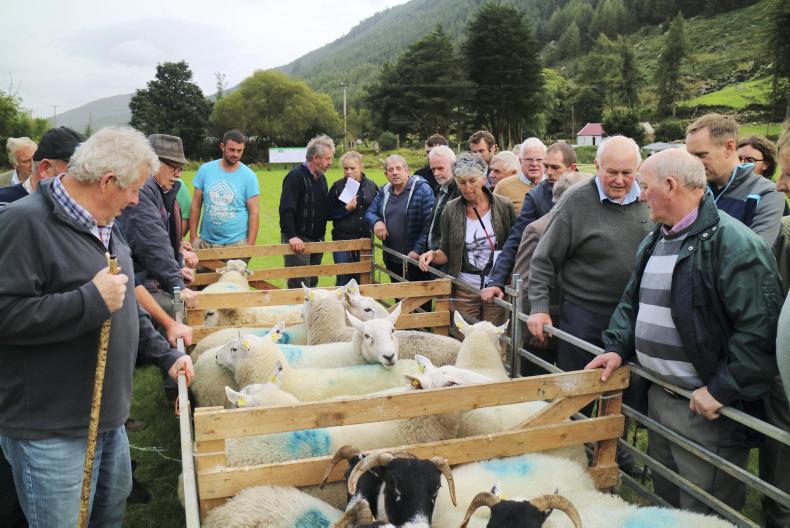




 This is a subscriber-only article
This is a subscriber-only article















SHARING OPTIONS: